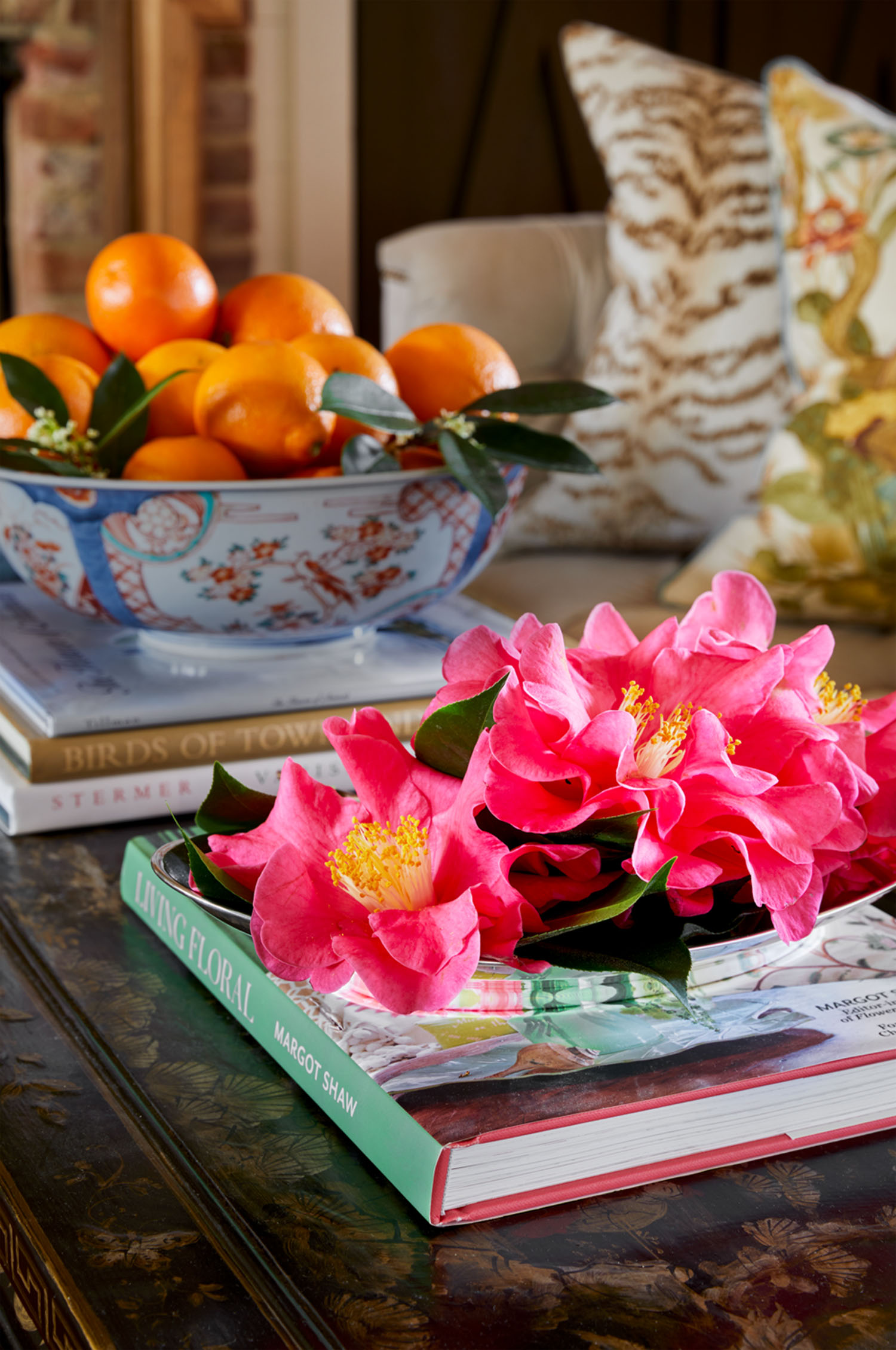
For James Farmer, camellias are a powerful talisman of his childhood. Growing up in Perry, Georgia, he was raised by Southern women who relished the flowers for their midwinter spark of color. “My great-grandmother, my grandmother, and my mother all shared the same birthday, February 24th,” James says. “That was camellia season, so there were always containers full of blossoms all over the house. As a result, I came to associate camellias with birthdays. Now that these wonderful women are all gone, I like to honor them on their special day with a party that includes as many camellias as I can find.”
James grows a few camellias of his own, but he also likes to visit his neighbors and do what he calls “civic pruning” to gather enough blooms for the celebration. “I know who grows which kind,” he says. “I will stop by to catch up and ask if I can gather any blooms that have fallen on the ground, as well as clip a few branches. The bushes need to be pruned after blooming anyway.”
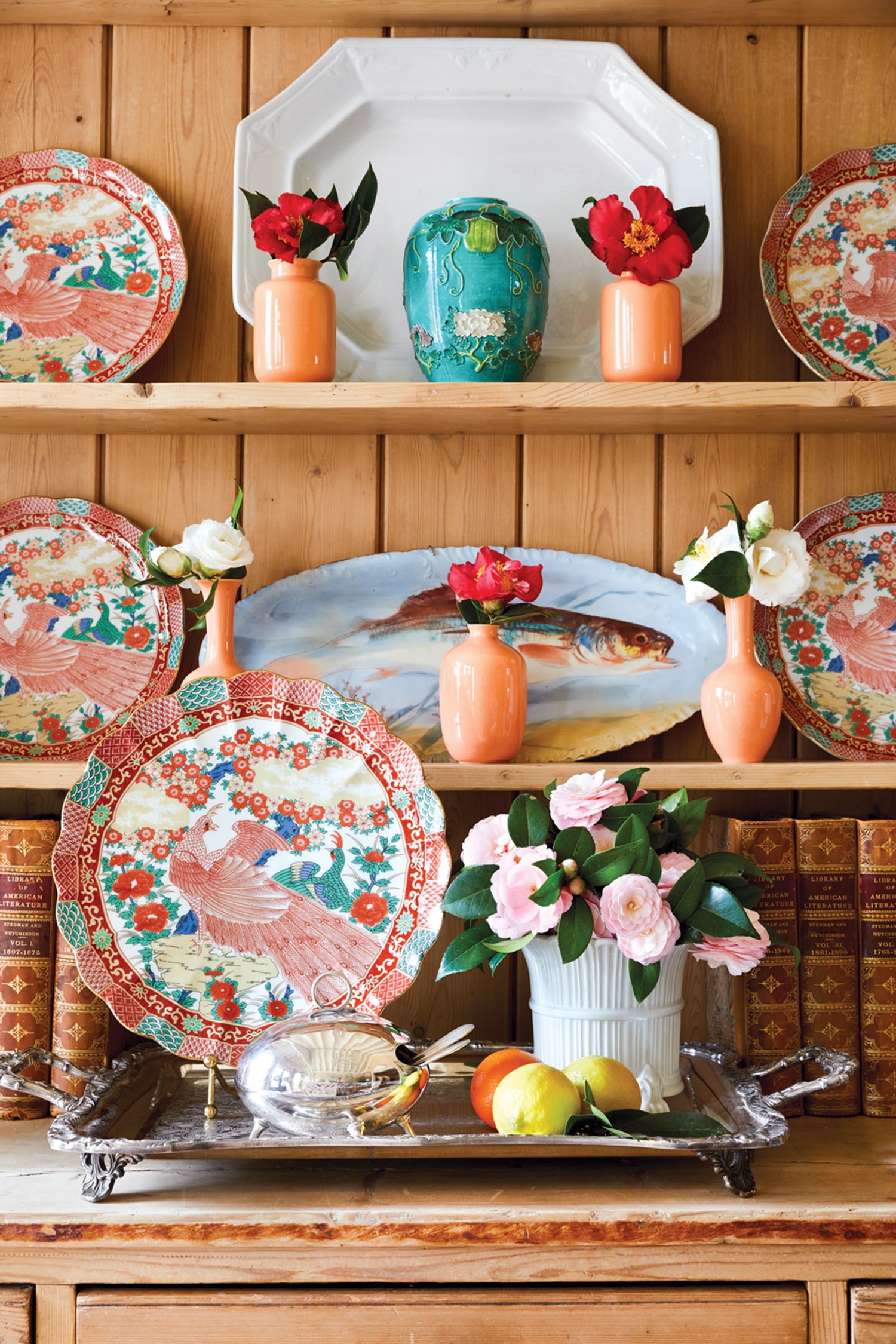
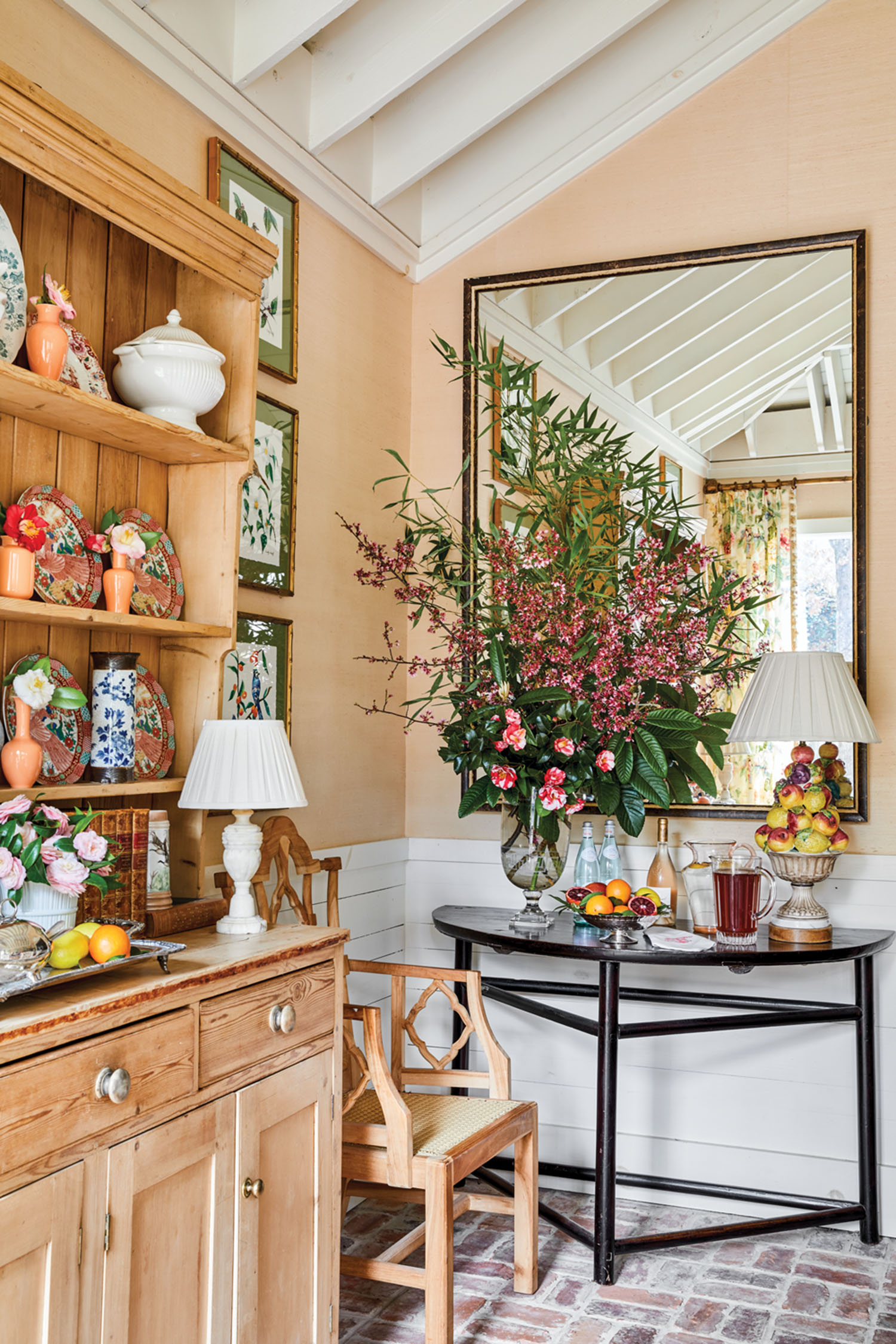
While camellias are ubiquitous in the Southeast, they are not native to the area. Part of the tea family, these blooms originated in eastern and southern Asia. The British East India Company began to import camellias to England during its trading heyday in the late 18th century, and the flowers made their way to the United States by 1797. Americans fell in love with the blooms, as they provided a reminder that spring was on its way, even during the gloom of January and February.
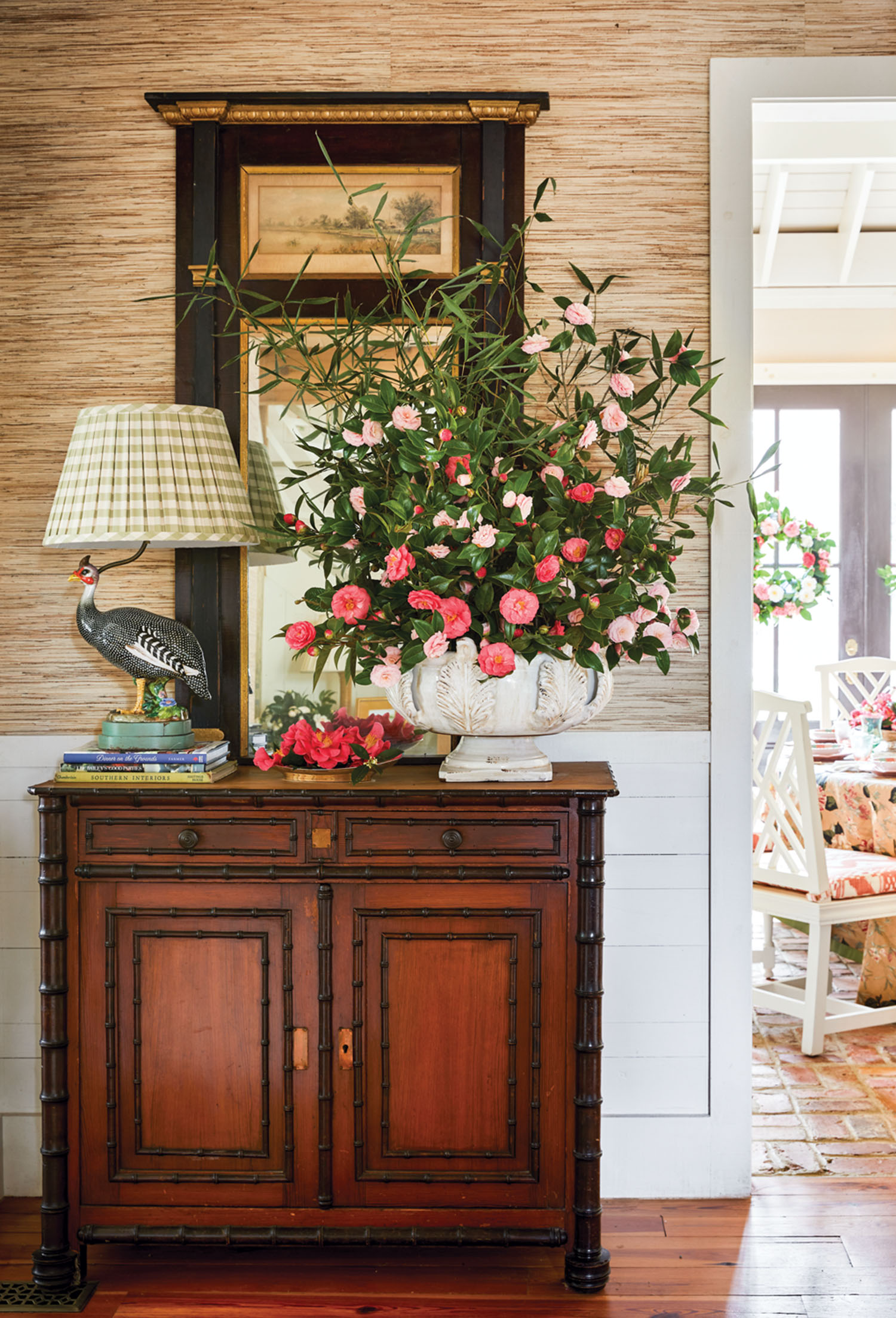
For this occasion, James took a more-is-more approach. He filled shelves with single-stemmed camellias in bud vases and then grouped the blooms with mid-century pottery. “Croghan camellia bowls from Charleston make good containers for camellias as well,” says James. “These glass bowls are very shallow and work great if you want to float the blossoms.” But the designer also looks for unique ways to display his camellias. “I like to put the flowers in my tulipieres, which feels very Southern,” he says. “Only in the South would you dare to take a container designed expressly for tulips and fill it with camellias.”
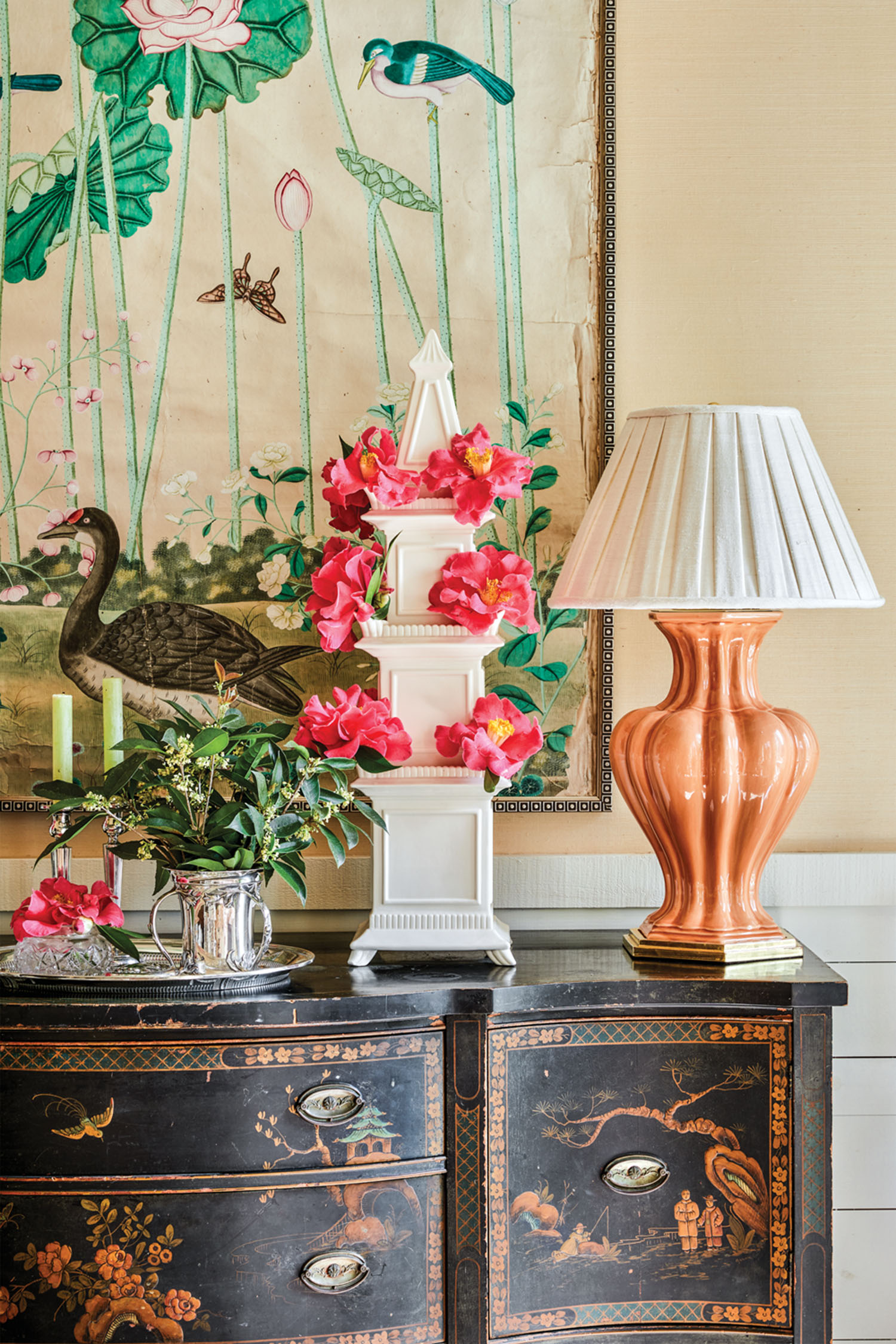
In addition, James often pairs citrus fruit with camellias. “I associate oranges with winter as well, so in my mind they belong together,” he says. Throughout his home, bowls of the fruit accompany containers of camellias, their pops of color echoing the flowers’ bright stamens.
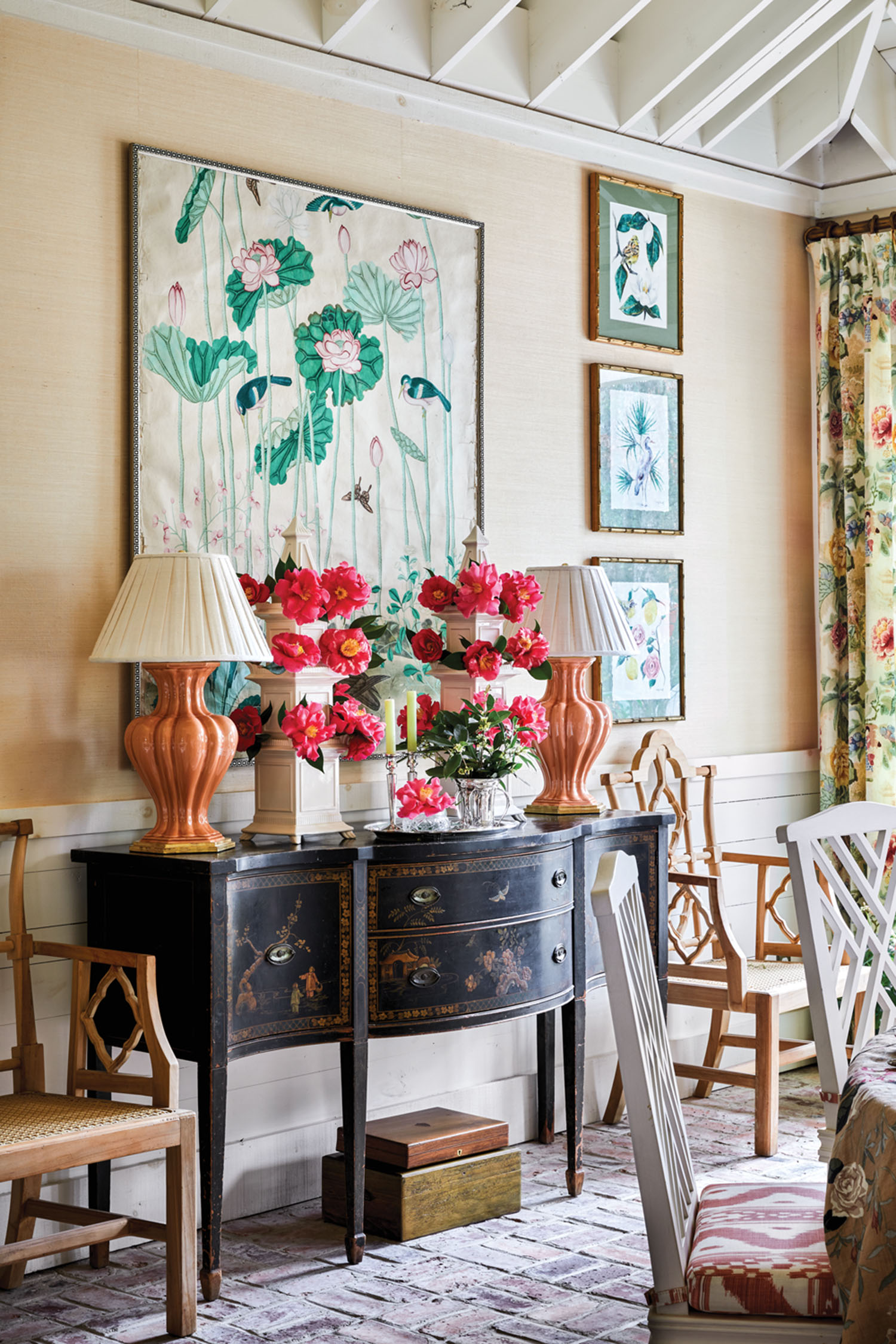

In the dining room, a japanned sideboard holds the towering tulipieres. The room’s sunny palette is another homage to James’s mother. “Her favorite color was coral, so we used it in the fabrics and china,” he says. James also enlisted floral designer Mary Pinson to put her ingenuity to work in decorating the French doors. She made two wreaths by combining a variety of camellias together and adding plenty of their glossy leaves for festive effect.
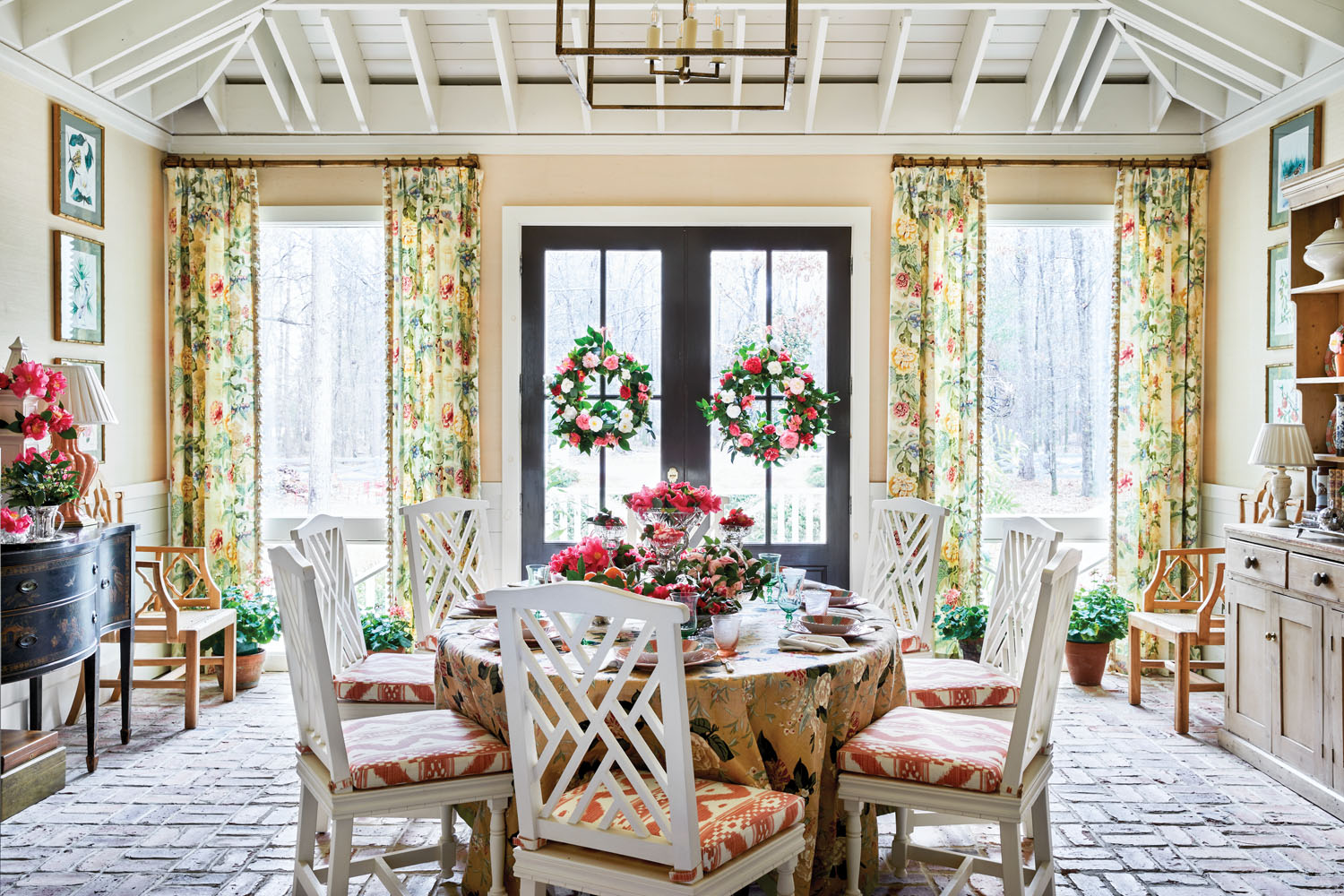
The fresh camellias aren’t the only ones in the house, however. James uses textiles that include the flower, such as the Carleton V fabric made into the dining room’s tablecloth and the Lee Jofa curtain fabric. His vintage china pattern includes camellias in the colorful Oriental design. The blooms even appear in an antique panel hanging over the sideboard.

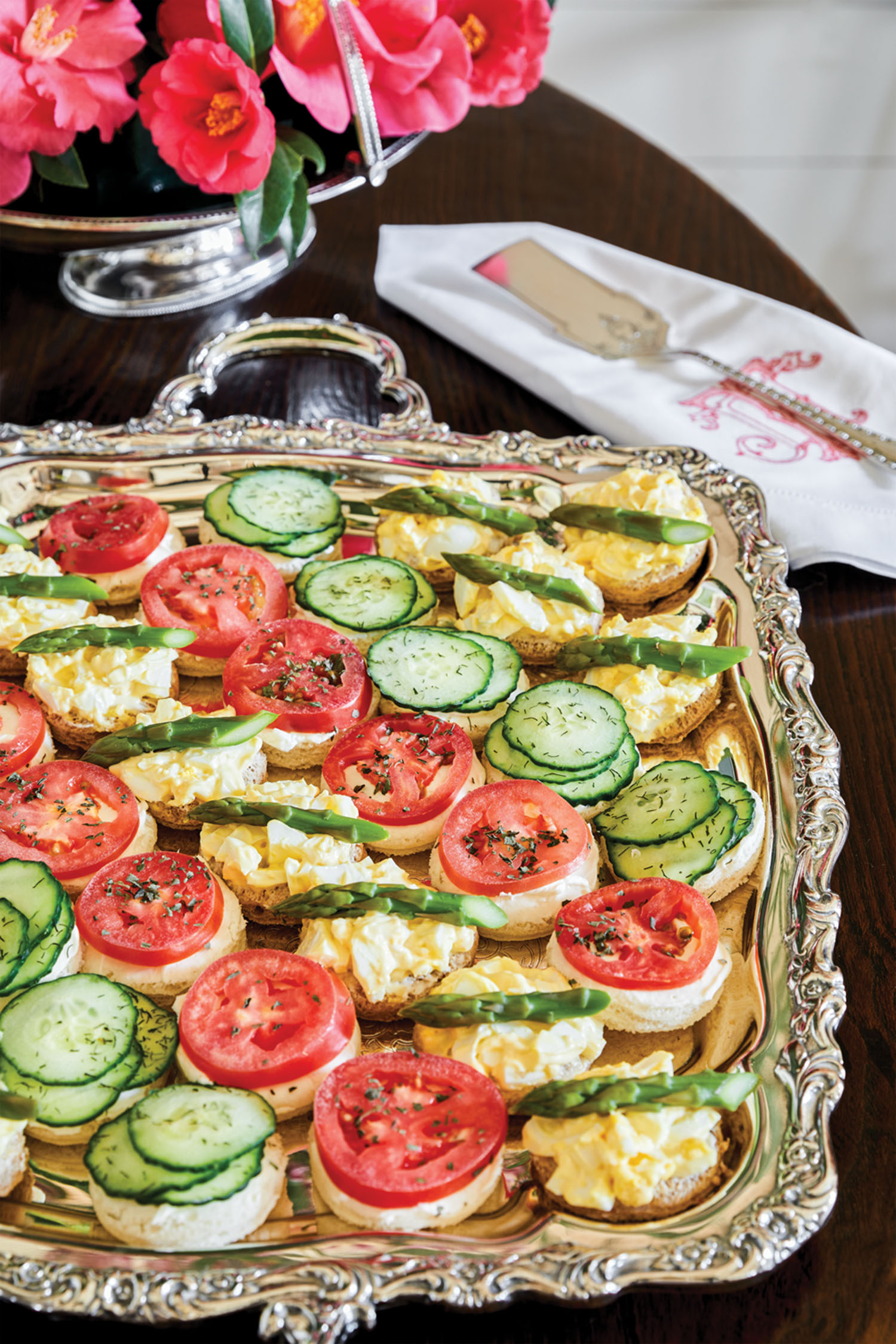
The menu for the luncheon also gives a nod to the wonderful women who shaped the designer’s life by featuring food they would certainly have relished. “My grandmother loved shrimp, so I had to include shrimp salad,” says James, who also served finger food, including sandwiches—cucumber and cream cheese, egg salad, and tomato—with the crusts cut off. “When I was growing up, if the crusts were cut off, you knew a minor dignitary was expected.” What better way to remember the special ladies in his life?
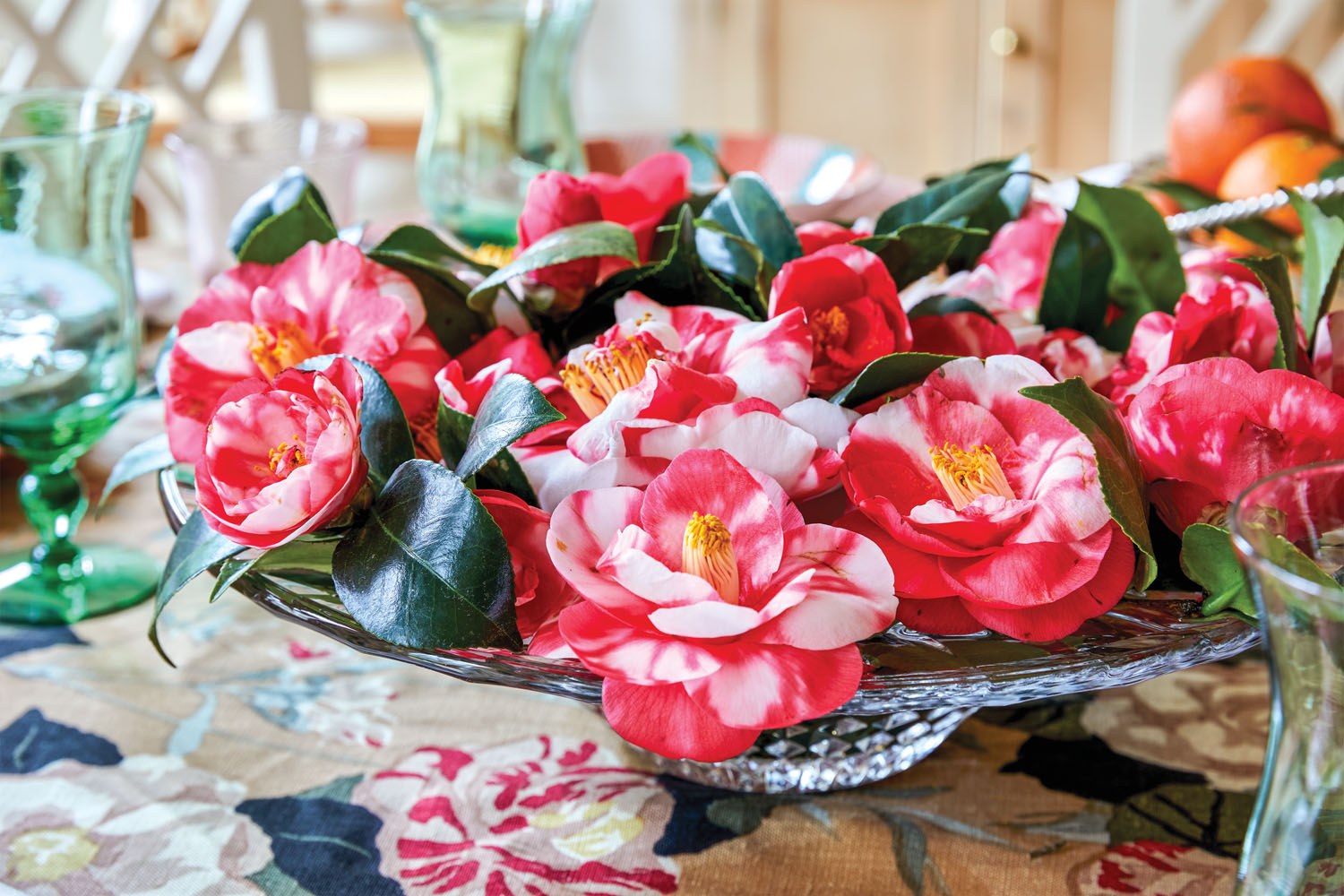
This one is pink with splashes of white and yellow stamens.
By Lydia Somerville | Photography by Emily Followill
